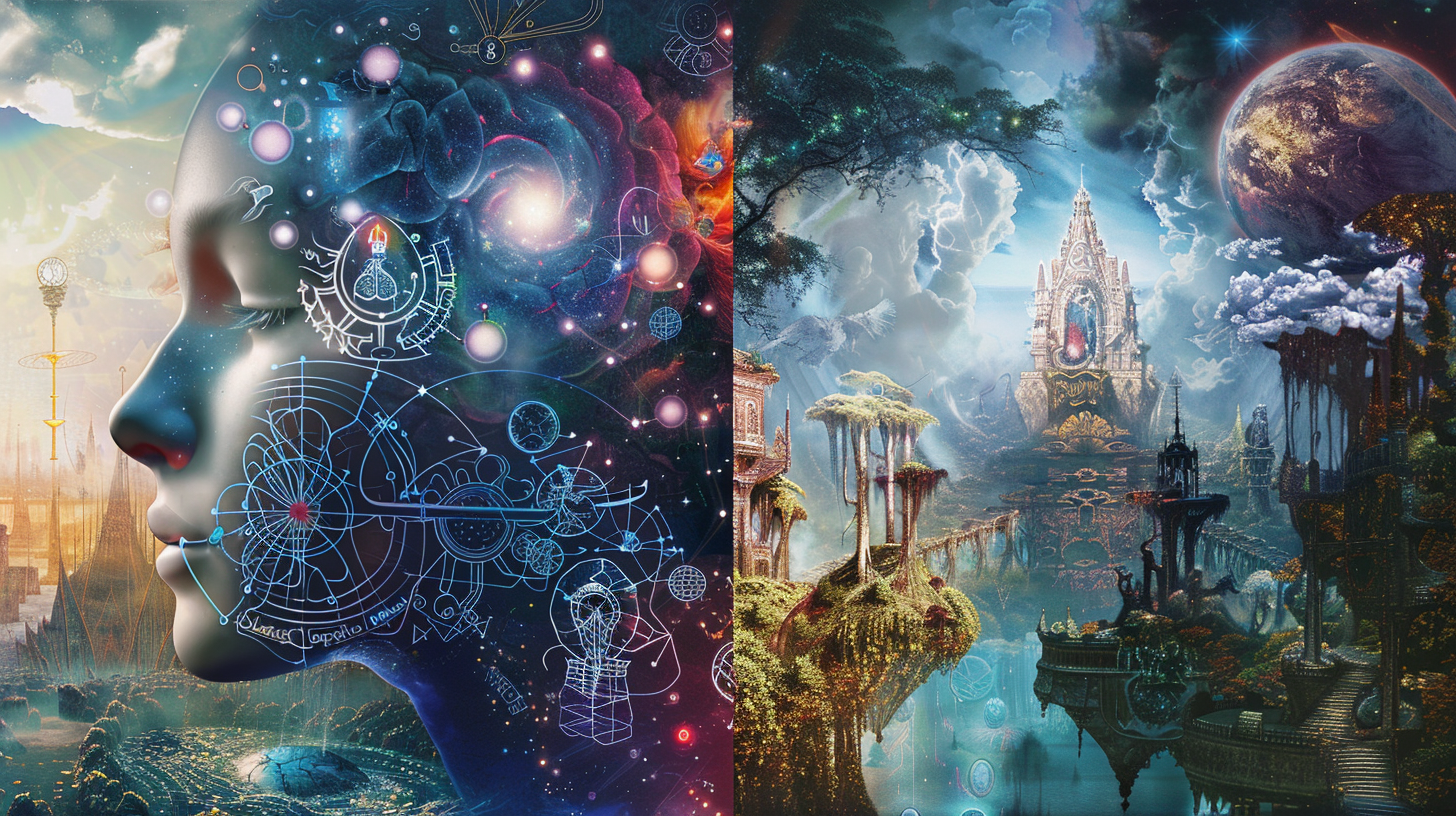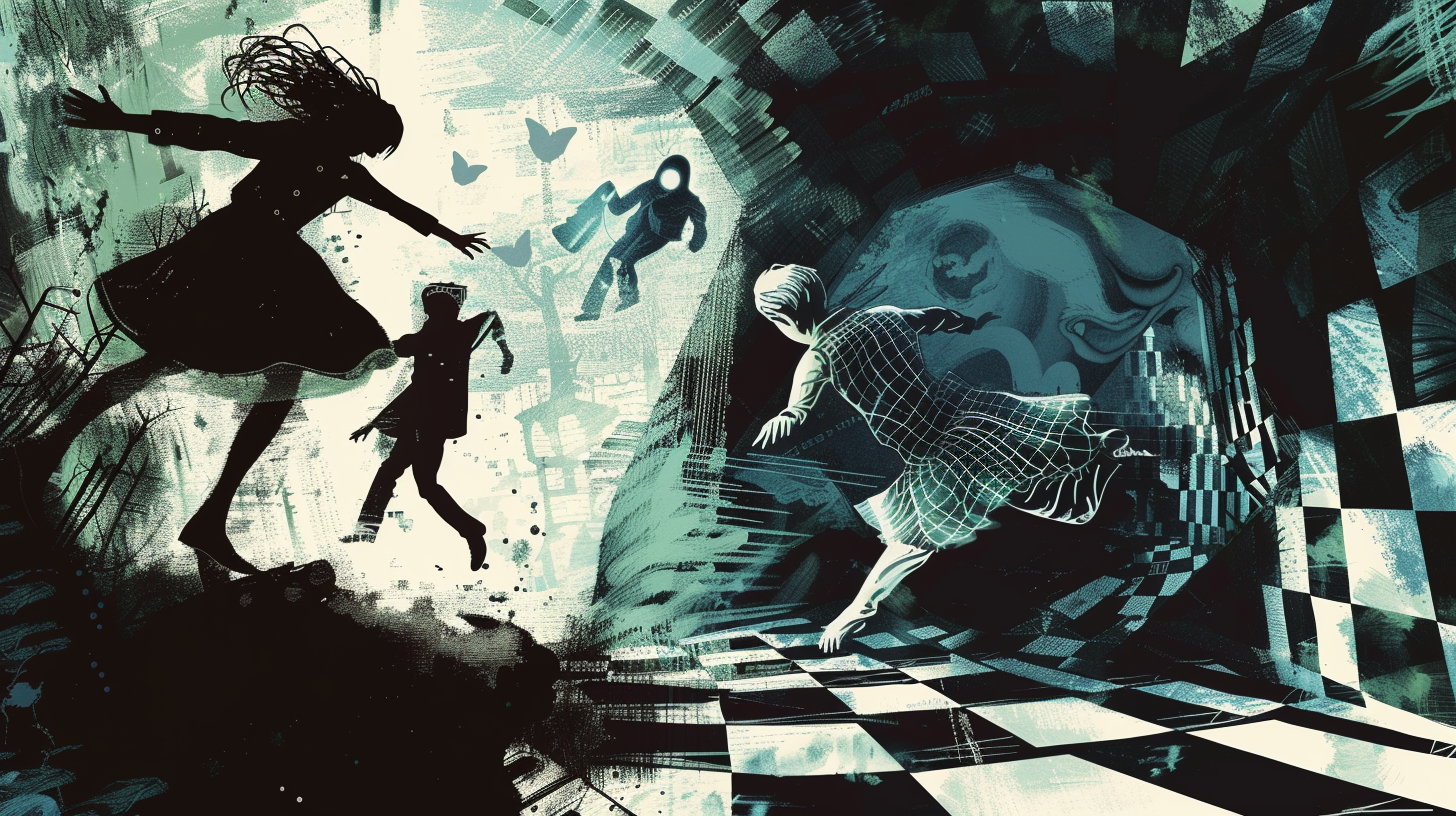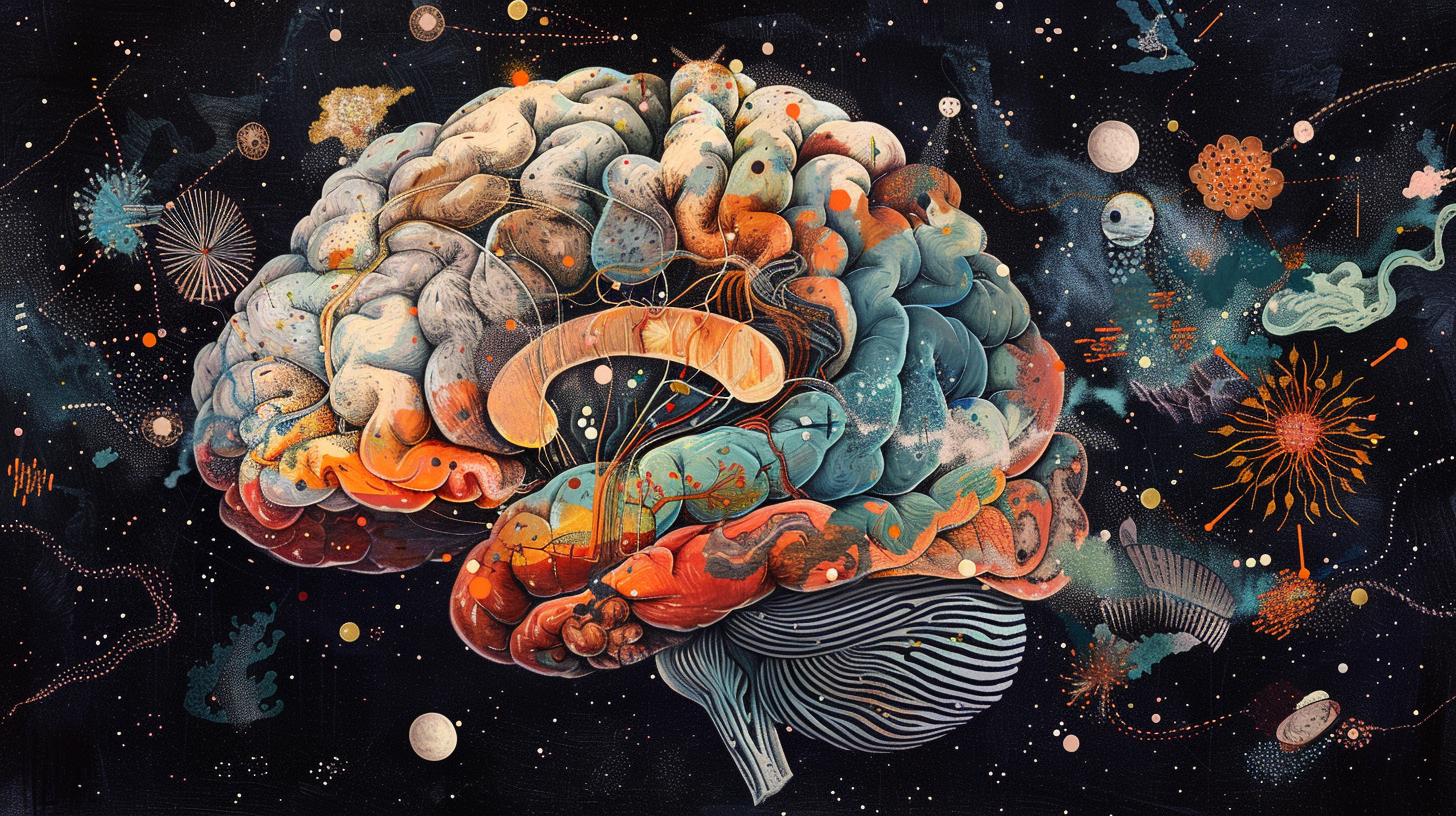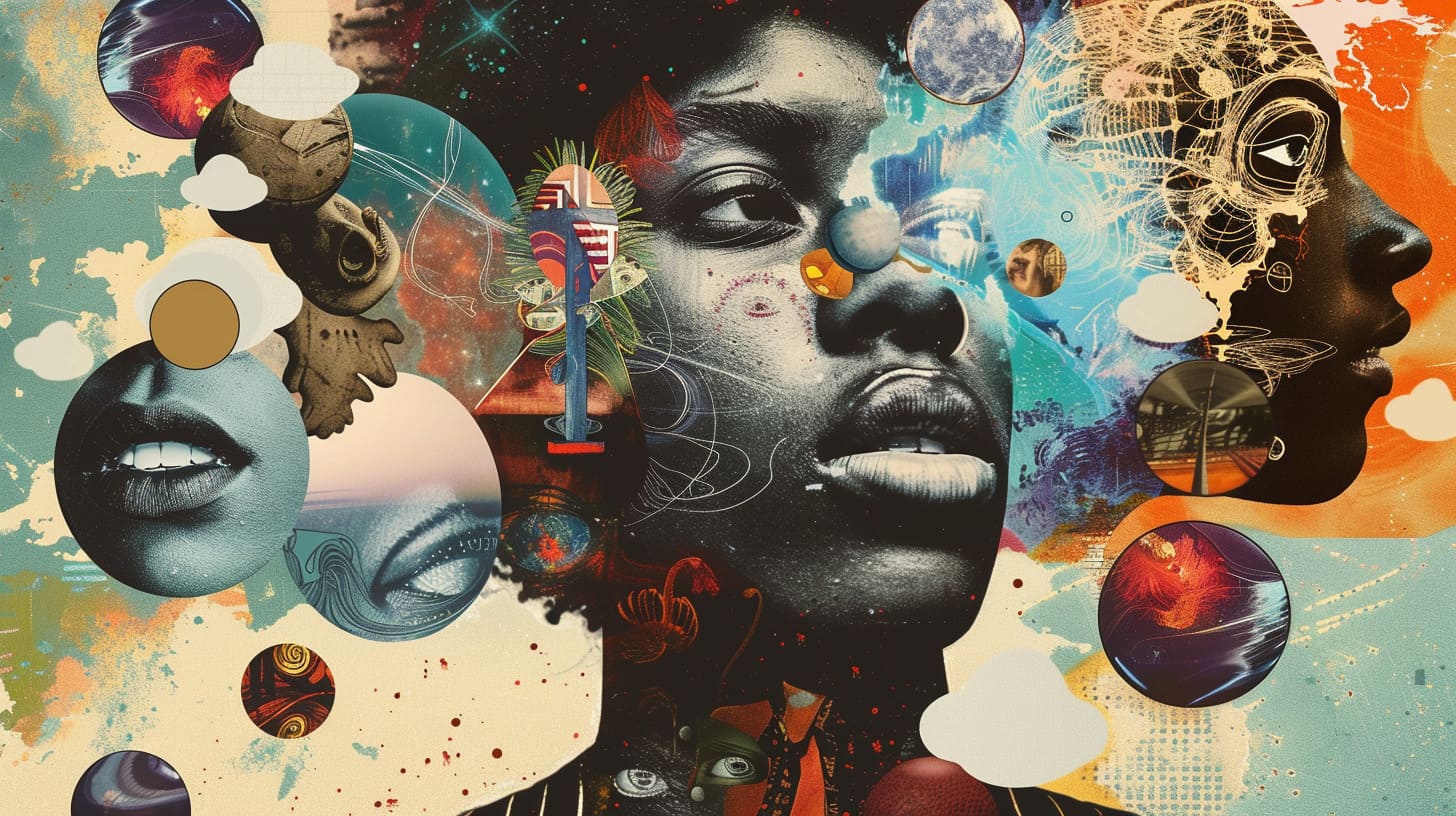Exploring the Concept of Reality Shifting
Reality shifting, a term that once lingered on the fringes, has vaulted into mainstream conversation, particularly within vibrant online communities. This intriguing concept, often intertwined with lucid dreaming or dimensional jumping, invites you to explore the vast landscapes of your subconscious mind, offering a form of conscious exploration that promises to expand your perception of reality. As of 2023, reality shifting is not just a solitary journey but a shared experience, bolstered by technological advancements such as binaural beats, virtual reality, and the collective wisdom of dedicated forums.
This evolving understanding of reality shifting has transformed it from a niche, New Age belief into a mainstream curiosity. It’s viewed as a gateway to personal growth, self-discovery, and an escape from the mundane. Whether through the Raven Method, Alice in Wonderland Method, or other visualization techniques, individuals engage with this practice seeking adventure, a sense of community, and a deeper connection with the unknown.
Recent studies underscore the appeal of reality shifting, linking it to high levels of absorption, creativity, and improved problem-solving abilities. These findings hint at the psychological impacts of such practices, suggesting that reality shifting might offer more than just an escape but a tool for enhancing one’s mental agility and imagination. As we delve deeper into the nuances of reality shifting, we uncover a world where the boundaries of reality blur, offering endless possibilities for exploration and personal expansion.
Reality Shifting: What Is It and Is It Science or Pseudoscience?

Reality shifting might sound like something straight out of a science fiction novel, but for many, it’s a practiced reality. To put it simply, it involves techniques such as meditation, visualization, and lucid dreaming to supposedly enter alternate realities or dimensions. You might have heard of methods like the Raven Method or the Alice in Wonderland Method, which are popular within the community. These methods are not just about escaping reality but are said to be transformative, offering both physical and emotional benefits.
The concept of reality shifting has its roots in the late 1990s and early 2000s, initially linked to the practice of using specific techniques to enter alternate realities. Over time, the definition expanded to include a variety of practices aimed at exploring the imagination or accessing other realities. Proponents argue it’s a way to harness the subconscious mind, drawing parallels with astral projection and quantum jumping.
However, when it comes to scientific backing, reality shifting sits on shaky ground. A handful of studies have explored its psychological and neurological aspects, particularly around lucid dreaming and altered states of consciousness. For instance, some research highlights that those who experience reality shifts show increased activity in certain brain regions. Yet, there’s no conclusive evidence supporting the existence of these alternate dimensions. Critics label reality shifting as pseudoscience, pointing out the lack of empirical evidence to back the existence of other realities.
Despite this, the debate continues. Some researchers advocate for an open-minded approach, suggesting the phenomenon warrants further study, especially considering reported benefits like increased creativity and reduced stress. On the other hand, skeptics remain unconvinced, viewing reality shifting as a form of delusion or wish fulfillment.
In summary, reality shifting straddles the line between science and pseudoscience. While scientific evidence is sparse, personal testimonials and the psychological impacts cannot be entirely dismissed. Whether reality shifting is a mental exercise, a form of manifestation, or something more, it continues to be a topic of fascination and controversy.
- Reality Shifting Techniques: Raven Method, Alice in Wonderland Method
- Potential Benefits: Increased creativity, improved focus, reduced stress
- Scientific Perspective: Limited empirical evidence, ongoing debate
- Community Beliefs: Harnessing the subconscious mind, exploring alternate realities
The Most Prominent Methods of Shifting Realities

Diving into the realm of reality shifting, two methods stand out due to their popularity and intriguing approaches: the Raven Method and the Alice in Wonderland Method. Both offer unique pathways to what many claim to be alternate realities or dimensions, utilizing the power of the mind through visualization and mental exercises.
Raven Method
Originating from a user named “Raven” on a paranormal board, the Raven Method has evolved significantly since its inception. This technique harnesses a series of visualization exercises aiming to transition the practitioner to a different reality. Its core relies on sensory immersion and emotional engagement, urging you to engage all your senses and delve into the emotional journey of shifting. Over time, variations like “Raven 2.0” and “Raven 3.0” have emerged, introducing refined mental exercises to enhance this immersive experience further.
Alice in Wonderland Method
On the other side, the Alice in Wonderland Method, or “AiW Method,” draws inspiration from the classic tale, guiding you through “doors” or steps toward an alternate reality. Developed by a user known as “Rabbit Hole,” this method incorporates lucid dreaming techniques and reality checks to bolster the shifting process. With its evolution, newer versions such as “AiW 2.0” and “AiW 3.0” have been introduced, offering more sophisticated techniques to improve the success of shifts.
Despite the growing popularity and community support for these methods, it’s crucial to approach them with a grain of salt. Success rates vary, and testimonials range from profoundly impactful experiences to none at all, highlighting the subjective nature of reality shifting.
Key Components for Successful Shifting:
- Sensory Immersion: Engage all senses in the visualization process, focusing on environmental details to enrich the experience.
- Emotional Engagement: Allow yourself to fully experience and embrace the emotions during the shifting process.
- Lucid Dreaming Techniques: Incorporate reality checks and dream journaling to become more aware and in control of your dream state.
- Visualization Practice: Enhance your mind’s ability to focus and create vivid images through regular practice.
- Mindset and Preparation: Maintain a positive, open-minded attitude and ensure a quiet, distraction-free environment for the best results.
Whether exploring the Raven Method or the Alice in Wonderland Method, your journey into reality shifting is highly personal and subjective. While these methods offer a structured approach, the experience and outcomes can vary widely among practitioners.
The Role of the Subconscious Mind in Reality Shifting

Your subconscious mind is like the backstage crew of a theater—operating behind the scenes to shape your reality. In the realm of reality shifting, the subconscious is believed to play a pivotal role, acting as a bridge to alternate realities. Let’s delve into how this happens.
Psychological theories suggest the “observer effect” — the idea that your expectations can alter your perception of reality. Consider how the placebo effect works: if you believe you’re taking a memory-enhancing drug, you might actually perform better on memory tests. This phenomenon underscores the power of belief and expectation, foundational pillars in reality shifting practices.
Dissociation, or the ability to detach from current reality and enter an alternate consciousness, is another concept tied to the subconscious mind. This plays into methods of shifting like the Raven Method or Alice in Wonderland Method, where the goal is to mentally transport oneself to a different universe. Such methods leverage mental exercises and visualization techniques, aiming to engage the subconscious in a deep, transformative manner.
Innovations such as binaural beats and virtual reality have surfaced as tools to potentially enhance this engagement with the subconscious. Binaural beats, for instance, aim to synchronize brainwave activity to induce altered states of consciousness, facilitating a deeper connection to other realities. However, it’s crucial to approach these technologies with caution, as their effectiveness and safety are not yet fully backed by scientific research.
Remember, the journey of reality shifting is deeply personal. Whether it involves traditional visualization or newer technological methods, it’s about finding what resonates with your subconscious mind to explore the vast possibilities of your consciousness.
Parallel Universes and the Multiverse Theory: The Foundation of Reality Shifting?

When delving into reality shifting, you might find yourself at the crossroads of science fiction and spiritual belief. At the heart of this intriguing junction lies the multiverse theory, a concept that suggests the existence of multiple, perhaps infinite, universes parallel to our own. Each of these universes could have its own set of physical laws and properties, distinctively different from what you experience daily. It’s a mind-bending backdrop against which reality shifting finds a speculative home.
Reality shifting, with its roots in metaphysical and spiritual practices, proposes that individuals can consciously transition between these realities or dimensions. This idea, at first glance, seems to intertwine seamlessly with the multiverse hypothesis. However, it’s crucial to understand that these concepts originate from distinct domains—reality shifting from belief systems and the multiverse theory from theoretical physics. Despite this divergence, proponents of reality shifting often cite the multiverse theory as a scientific underpinning that may explain their experiences of visiting alternate realities.
Critics and skeptics, on the other hand, argue that reality shifting lacks empirical evidence, viewing it more as a psychological phenomenon akin to lucid dreaming or imaginative escapism than a tangible interdimensional travel. They suggest that the allure of reality shifting may stem from its offering an escape to a more desirable reality, rather than any substantiated connection to parallel universes.
Despite these differing viewpoints, the dialogues surrounding reality shifting and the multiverse theory highlight a fascinating aspect of human curiosity—the desire to explore beyond the known limits of our reality. Whether through the lens of hard science or the personal testimonials of those who practice reality shifting, this curiosity propels the ongoing search for understanding the true nature of our universe and our place within it.
- Key Points to Consider:
- Reality shifting and the multiverse theory come from different knowledge domains.
- There is no direct scientific evidence linking reality shifting to parallel universes.
- The multiverse theory provides a speculative foundation for reality shifting beliefs.
- Skeptics view reality shifting as a psychological or imaginative phenomenon.
In sum, while reality shifting and multiverse theory share thematic connections, they remain fundamentally separate in their evidence and foundations. The journey of exploring these ideas is a testament to human creativity and the quest for deeper understanding, offering a bridge between the tangible and the theoretical, the known and the mysterious.
Testimonials and Personal Stories of Shifting
Imagine for a moment, stepping into a world where your surroundings are not just different but entirely advanced, eco-friendly, or even magical. This isn’t just a daydream for some; it’s their reality shifting experience. Take Sarah’s account, for instance. She vividly describes finding herself in a parallel universe where technology has leaped beyond our current limitations, showcasing renewable energy and harmonious living as the standard. The profound peace and environmental consciousness she observed marked a stark contrast to our present reality.
Then there’s Mark, who shares a tale that sounds straight out of a fantasy novel. He claims to have shifted to a reality where magic is as real as the air we breathe, and human beings live in sync with nature. His experience, filled with awe and beauty, suggests that the realms we venture into through shifting are bound only by our imagination.

The method to these extraordinary journeys often involves deep focus, visualization, and a willingness to embrace the unknown. Techniques like the Raven Method and the Alice in Wonderland Method, alongside practices such as meditation and lucid dreaming, are tools that shifters use to navigate these alternate realities. The shared stories highlight a common thread — a yearning for something beyond the mundane, propelled by a belief that it’s possible to experience more.
The growing trend of incorporating technology like virtual reality headsets and binaural beats into reality shifting practices suggests an evolving landscape. These tools are not just enhancing the experience but also bringing together communities of shifters, eager to explore and share their journeys.
At the heart of these stories lies a powerful testament to human creativity and the subconscious mind’s capacity to transcend physical boundaries. Whether viewed through the lens of pseudoscience or as a psychological phenomenon, the impact on those who’ve experienced it is undeniably profound. Reality shifting, with its blend of ancient visualization techniques and modern technological aids, continues to fascinate and inspire, opening doors to worlds we’ve only dared to dream of.
The Psychological and Ethical Implications of Reality Shifting

Diving into reality shifting can be like opening a door to another dimension of your mind. It’s a journey through visualization techniques, methods of shifting like the Raven Method and Alice in Wonderland Method, and mental exercises that promise more than just a lucid dream. But what does stepping through that door mean for your mental health and ethical compass?
Studies hint that practices linked to reality shifting, such as lucid dreaming, could sprinkle a bit of magic dust on your mental well-being, reducing stress and sparking creativity. Yet, there’s a shadow side. The risk of feeling detached from reality, or even experiencing dissociative symptoms, can’t be ignored, especially if you’re diving deep too often or in a way that’s out of sync with your mental health needs.
The ethical tightrope is just as tricky. On one hand, there’s the allure of escaping to a world where the impossible seems within reach. On the other, there’s the danger of getting so lost in these alternate realities that the real world starts to blur. Misinformation can fuel these fires, leading some down a path lined with unrealistic expectations and potentially harmful practices.
Recent debates and studies are starting to sketch out a roadmap for navigating these complexities. They highlight the potential for using these altered states of consciousness as tools for healing, underpinned by solid research and ethical guidelines. The goal? To ensure that those who embark on this journey are well-informed and supported, minimizing risks and maximizing the potential for positive outcomes.
In short, reality shifting is more than just a trend. It’s a practice with deep psychological and ethical layers waiting to be explored. Whether it’s tapping into the subconscious mind, flirting with the ideas of parallel universes, or simply seeking a new way of manifesting and visualizing goals, it’s clear that this is a field ripe for further investigation and understanding.
Reality Shifting Community: A Collective Experience
The reality shifting community is a vibrant, supportive network spread across various online platforms, each offering unique resources and perspectives on this intriguing practice. Among these, RSLife on Discord shines as a beacon for over 100,000 members, providing a comprehensive hub for sharing experiences and techniques. Similarly, the reality shifting subreddit boasts a vast membership, creating a rich forum for discussion and discovery. YouTube and TikTok have also emerged as vital platforms, with creators like “RealityShift” and “Reality Shifting Explained” leading the charge in disseminating information and fostering a sense of community through engaging content.
These communities serve as vital support systems for both novices and experienced practitioners, offering guidance, resources, and a safe space to share and grow. The collective experience is built on several pillars, including:
- Resource Sharing: From articles to personal stories, the wealth of shared knowledge helps enlighten those new to reality shifting, providing a solid foundation for exploration.
- Technique Sharing: With methods ranging from the Raven Method to the Alice in Wonderland Method, community members frequently exchange strategies to help each other find the most effective ways to shift realities.
- Emotional Support: Newcomers are met with encouragement and understanding, helping them navigate the often complex emotional landscape of reality shifting.
The evolution of these communities has been marked by increased moderation and the establishment of clearer guidelines, ensuring a welcoming and safe environment for all members. This nurturing atmosphere, combined with the explosive growth of reality shifting online, has not only expanded the community but also enriched the practice itself, transforming it into a tool for personal growth, creativity, and self-exploration.
Recent trends, such as gaining mainstream attention and leveraging technological advancements like virtual reality, have further propelled reality shifting into the public eye, enhancing its appeal. The emphasis on collaboration and community support underscores a shift towards a more interconnected and mutually supportive practice, reflecting a broader trend of using shared experiences and resources to foster personal and collective growth.
Conclusion: The Future of Understanding Reality Shifting
As research delves deeper into the world of reality shifting, the boundaries between science and what many consider pseudoscience are increasingly blurred. With studies exploring the neurophysiological aspects of practices akin to reality shifting, such as lucid dreaming, there’s growing evidence of its tangible effects on the brain. This fascinating intersection of conscious awareness, visualization, and manifestation techniques, highlighted by increased activity in brain regions linked to self-awareness and spatial perception, is paving the way for a new understanding of human consciousness.
Equally, the exploration of reality shifting for therapeutic purposes opens up promising avenues for mental health treatment. The potential to harness these practices to alleviate anxiety and improve well-being points to a future where reality shifting could be part of psychological care. Yet, the road ahead is not without its challenges.
Ethical considerations and the psychological impacts of reality shifting on individuals highlight the need for a cautious approach. As the community grows and more people experiment with shifting realities, ensuring that these practices are safe and beneficial becomes paramount. Questions around the regulation of reality shifting for therapeutic use, access to these practices, and the potential for misuse underscore the importance of ongoing research and dialogue.
While the intrigue around reality shifting continues to flourish within both online communities and academic circles, the journey to fully understand its mechanisms, benefits, and implications is just beginning. By maintaining a balance between open-minded exploration and rigorous scientific inquiry, the future of reality shifting promises to unlock further mysteries of the human mind and reality itself.
FAQs About Reality Shifting
What is reality shifting and how does it work?
Reality shifting involves consciously moving your awareness to a desired reality, often leveraging methods like visualization, the Raven Method, or the Alice in Wonderland Method. It’s akin to lucid dreaming but is experienced as moving across realities.
Is reality shifting real or just a form of lucid dreaming?
Though not scientifically proven, reality shifting differs from lucid dreaming by its intent. Shifters aim to experience life in an alternate reality, while lucid dreaming involves conscious control within a dream.
What are the risks of reality shifting?
Potential risks include sleep disturbances, anxiety, and the blurring of reality and fantasy, leading to confusion or false memories. Always prioritize mental well-being when exploring these practices.
Common methods for shifting realities?
Popular methods include the Raven Method, which uses a specific sleeping position and visualization, and the Alice in Wonderland Method, which involves imagining oneself running after a figure from another reality until you “fall” into that reality.
Requirements for successful reality shifting?
Key components include a focused intention, deep relaxation, and vivid visualization skills. Practices such as meditation can enhance one’s ability to shift by improving concentration and visualization capabilities.
Common experiences during and after a shift?
During a shift, you might experience sensations like tingling, floating, or a sense of detachment. Afterward, feelings of euphoria, disorientation, or a deeper understanding of oneself are common.
How to prepare for reality shifting?
Preparation involves mental exercises to improve visualization, creating a detailed script of the desired reality, and practicing relaxation techniques to reach a deep state of meditation or near-sleep.
Different realities or dimensions that can be shifted to?
The possibilities are limited only by imagination, ranging from worlds vastly different from our own to realities very similar but with key differences. The concept of parallel universes in the multiverse theory supports this diversity.
How to tell if you’ve successfully shifted realities?
Signs include experiencing the specific details scripted for the desired reality, a sense of newness or difference in the environment, and interactions with entities or characters from that reality.
Experiences of others who have shifted realities?
Testimonials often speak of profound emotional and psychological impacts, from feeling complete immersion in another world to gaining insights that influence their lives in this reality.
Remember, while reality shifting offers fascinating experiences, maintaining a balance and grounding in your current reality is crucial. Always approach with mindfulness and care for your mental health.

Leave a Reply